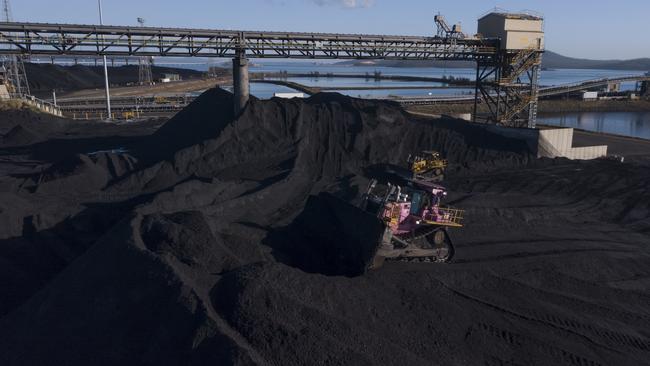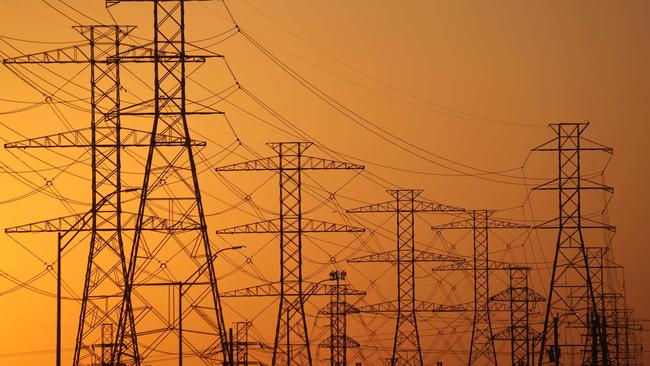Skewed coverage as journos misread the three Cs: coal, China and climate


The article, by Geoff Chambers and Patrick Commins, said Australian thermal coal exports had defied China’s export bans to “deliver an additional $6bn in annual export earnings”. The result not only defied the Chinese but also the tens of thousands of words written by Australian journalists in the past year forecasting the imminent collapse of thermal coal exports.
The story came only three months after another in The Australian that showed conventional media wisdom about the wider effects of China’s bans on our barley, beef and wine looked to be wrong. On November 24, Commins reported iron ore exports had surged in October to a record $10.9bn, including a 7 per cent ($833m) rise in exports of all metals to China.
China’s share of our total exports is actually growing.
You won’t read about supreme leader for life Xi Jinping’s failure to bring us to our knees in the Global Times, which in April described Australia as chewing gum under China’s boot. Neither will you hear about coal’s resurgence in much of the media here. Many journalists swallowed green propaganda that mistook slowing sales and prices in a pandemic-induced global slowdown for the beginning of the end for Old King Coal. Thermal and coking coal remain Australia’s second biggest export earner after iron ore.
Much of the media underplayed another terrific energy story in the past fortnight: the collapse of the power system in Texas in a cold snap during which wind turbines froze and people found out years of warnings in the “Murdoch Media” about the unreliability of wind and solar power were not “fake news” after all.
An editorial in The Wall Street Journal on February 15 summed up the Texan freeze: “Blame a perfect storm of bad government policies, timing and weather. Coal and nuclear are the most reliable sources of power. But competition from heavily subsidised wind power and inexpensive natural gas, combined with stricter emissions regulations, has caused coal’s share of Texas’s electricity to plunge by more than half in a decade to 18 per cent.”
It was the winter equivalent of blackouts that hit California during last northern summer’s bushfire season.

Like clockwork, Guardian Australia environment editor Adam Morton chimed in last Tuesday suggesting five of Australia’s remaining 16 coal-fired power plants could be unviable by 2025. The amount of renewable energy about to come on to the market had been underestimated, he wrote.
“Solar and wind plants built between 2018 and 2025 would add 70,000 gigawatt hours of new electricity supply”, more than a third of the current grid. The Guardian said renewable energy would power between 40 and 50 per cent of the market by 2025, forcing reductions in coal and gas generation by 28 and 78 per cent respectively in seven years. The Australian Energy Market Operator warned loudly last year that all this was making the grid unstable. Texas here we come.
This is happening here as China, India, Russia and most of Asia continue to expand coal-fired power generation. Under its Paris Climate Accord commitments, China is permitted to keep lifting carbon dioxide emissions until 2030. It commissioned 38.4GW of new coal-fired capacity in 2020 as the rest of the world cut 17.2GW. It has another 247GW under development, “enough to supply all of Germany”, according to Reuters.
Russia, the number four global emitter, is not a Paris signatory and has made it clear it is prepared to step up shipments of oil and gas to pick up any demand left by new US President Joe Biden’s decision to lead on Paris commitments. Bloomberg reported on February 9 that after Biden signed an order suspending all new oil and gas leases on public land, investors began betting Russian oil giants “such as Lukoil PJSC, Rosneft PJSC and Tatneft PJSC will rally as they mop up market share from rivals in the US”.
And despite media reports about booming renewables in India, the Press Trust of India reported on February 9 that it would replace the EU as the world’s number three energy user by 2030. International Energy Agency forecasts suggest India will double its “1123 million tonnes oil equivalent as its gross domestic product expands to $US8.6 trillion by 2040”. It will account for a quarter of global energy demand growth in that period. Car ownership will rise five-fold, suggesting India will also lead world oil demand growth.
The EU, which can rely on nuclear power and a rort that allows it to claim burning woodchips as renewables, looks likely to fall short of its 2030 targets. Bloomberg Green on February 18 reported the EU was likely to deliver a 46 per cent reduction on 1990 emission levels compared with a commitment of 55 per cent. And even though environmentalists here reject Prime Minister Scott Morrison’s transitional gas plans, Bloomberg says the EU will need more reliance on gas as coal is phased out.
All this comes as our government made clear in December that it would meet its Paris commitment to reduce emissions by 26-28 per cent on 2005 levels by 2030. This is a bigger per capita task than most countries because Australia has had among the fastest population growth rates globally.
Australia also has one of the world’s highest penetrations of renewable energy, though you would not know it the way some media cover the issue. With only 1.3 per cent of global emissions, our total annual CO2 output is less than the annual rise of emissions in China.
The media needs to restore some balance to climate coverage. The RCP8.5 scenario preferred by Guardian Australia and Greta Thunberg is a debunked worst case scenario that assumed ever-rising coal consumption and no rise in renewables.
Most of these writers also know political leaders who criticise Australia for failing to sign up to net zero emissions by 2050 actually have no formal pathway to get there themselves. They are green poseurs like Biden’s Special Envoy on Climate John Kerry, who last Thursday criticised Australian coal exports only days after it was revealed US coal exports to China had risen 748 per cent in the latest quarter.
US miners are cashing in on China’s ban of our coal, according to S&P Global Market Intelligence on February 23.






The most under-reported story last week was the one that led page four in The Australian on Tuesday: “Coal boom stokes $2bn budget boost”.